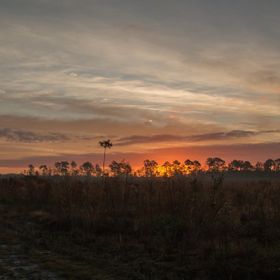

s073715
FollowThis Tree Nymph just happened to land so it was framed by a straw that was similar to the one it was sitting on. Cropping the shot provided for an interesting c...
Read more
This Tree Nymph just happened to land so it was framed by a straw that was similar to the one it was sitting on. Cropping the shot provided for an interesting composition.
Read less
Read less
Views
128
Likes
Awards
Fall Award 2020
Categories
Same photographer See allBehind The Lens
Discover more photos See all
Behind The Lens
Location
This photo was taken at the Florida Museum of Natural History Butterfly Habitat in Gainesville, Florida. The museum is home to an impressive habitat with butterflies, plants, and some birds from around the world. The enclosure relies on natural lighting and to some degree the temperature is also dependent on the weather. There is also a small water feature/stream that holds turtles, koi, and other aquatic life.Time
The photo was taken just after 12:00PM and relied on the natural light available at the time. Since the habitat is part of the museum exhibits, visitors are dependent on opening times as well as the number of visitors allowed into the exhibit at one time.Lighting
As mentioned, lighting is all natural and while flash may be allowed, I did not rely on artificial lighting. In addition tripods are not allowed, and the photographer is at the mercy of ISO, aperture, and shutter speeds that will provide the best exposure with the existing lighting all while the camera is handheld. These conditions also prevent most shots that have the butterflies moving, but they are not impossible.Equipment
As this was early in my DSLR days, I was using a Canon 70D with the Canon EF100 - 400mm, f/4.5-5.6L IS USM lens. The focal length was 400mm, 1/500th sec at f/5.6, ISO 640.Inspiration
In the butterfly exhibit one can find themselves presented with opportunity overload and it's often too easy to just snap away at every butterfly you see. While the exhibit has many natural plants including orchids that provide excellent components for a composition, many of the butterflies are sitting on feeding stations or in places that do not offer the natural look I was searching for. In this case the butterfly had landed on a slim stalk of a grass-like plant and it wasn't until I looked in the viewfinder that I saw a second stalk that provided a natural frame for the shot. I was far enough away that I was given a bit of extra room for cropping.Editing
As with most of my photos I use Lightroom for basic adjustments, lens corrections, and cropping. At the time I was not a very proficient user of Photoshop and mainly used it to resize shots for sharing online. In this case I took advantage of the natural frame provided by the stalks of grass and cropped so the scene was divided into thirds with the stalks disappearing into the diagonal corners. I had hoped the viewer would be drawn into the scene from the lower left and would be taken out of the scene at the upper right. The original image was also rotated 90° to the right to take advantage of the diagonals. In the original shot the butterfly was actually hanging from the stalk of grass.In my camera bag
At the time this photo was taken my equipment was very minimal. Restrictions on the use of tripods coupled with the fact the habitat has narrow walkways and can be somewhat crowded, limited my kit. I carried a small bag that only had room for the camera body and two lenses. That day I had a choice of an 18 - 55mm kit lens or my 24 - 105mm plus the 100 - 400mm. I carried the 24 - 105mm, but found I was rarely using it.Feedback
Butterflies are fascinating to photograph but can be difficult to photograph in the wild. If you are seeking butterflies to photograph and are close to a similar habitat, it can provide much needed experience at selecting the appropriate exposure settings. In addition you are often provided butterfly species that may be unavailable in your area. At the same time, I would tell anyone who is truly interested in butterfly photography, the sense of accomplishment that comes with a photograph taken in the wild is hard to beat. It requires knowledge of the subject, stealth, timing, and of course the weather has to cooperate. The best piece of advice is to just get outdoors with camera in hand and start looking for subjects; they may be as close as your back yard.











































